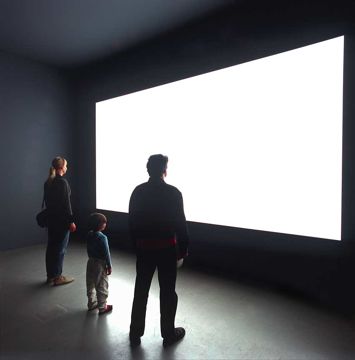Teaching with film or taking a trip with students to a museum can sometimes be an experience somewhere between total bliss and a dental visit. It can be eye-opening or so bad you want to forget it altogether. Personally, I have experienced no shortage in my own career where these scenarios have gone extremely well (students getting it, real dialogue, feeling the buzz of the conversation, making connections) or really, really wrong (students setting off museum alarms, falling asleep and actually injuring themselves doing so… you get the idea). But there are some strong similarities in how we can prepare and engage students when teaching with film and taking meaningful field trips. Here are four examples we shared recently with our Art21 Educators:
Take a good look at the films before you show them– Film and field trips need to be previewed by the teacher in advance in order to plan effectively. I know this sounds like a no-brainer, but you can’t imagine how many people have cut corners and assumed certain things about films or exhibits when suddenly… WHAM!…. the shock of, “What did I just do?” sets in. Do NOT show any film or take a field trip with students unless you have previewed the material first…. Unless, of course, you just love surprises.
Do the front-end work– Prepare students in advance for what they will see by sharing images, quotes and (his)stories about the artist(s). Prepare students for what you expect when watching the film or participating in the field trip. What will excellent participation look and sound like? Tell students in advance what your expectations are and motivate students with high quality visuals that pose questions in order to get them excited to see and explore the work.

Eleanor Antin, "Loves of a Ballerina" 1986 Filmic installation, Courtesy Ronald Feldman Fine Arts, New York
Get everyone actively involved– Instead of just looking or watching, students must be engaged meaningfully when a teacher shares a film or takes them to an exhibit. Teachers must design activities that will build on what was discussed previously in the classroom and impact what will be learned afterward. Using video and field trips effectively call for the teacher to stop the action often and check for understanding. Activities must be fun and challenging. Do not design “time-fillers” because they will backfire.
Follow-up and make connections– Take the time to reflect on the experience the next day. What do students remember most? Why? What questions still come up? How will the film or field trip affect the next steps in class? How does the experience connect and inform the work students will do? Design activities and discussions that build a bridge between what they just did and what the students will do next.
Being prepared and engaged as we work with students in these situations can make all the difference in the world. It’s part of effective planning, management, and reflection. Not to mention the fact that you probably will lessen your chances of needing to explain why your student was kissing a Chuck Close painting (yes, it’s true, and I’m sure you have a few good stories of your own).
Until next week…




